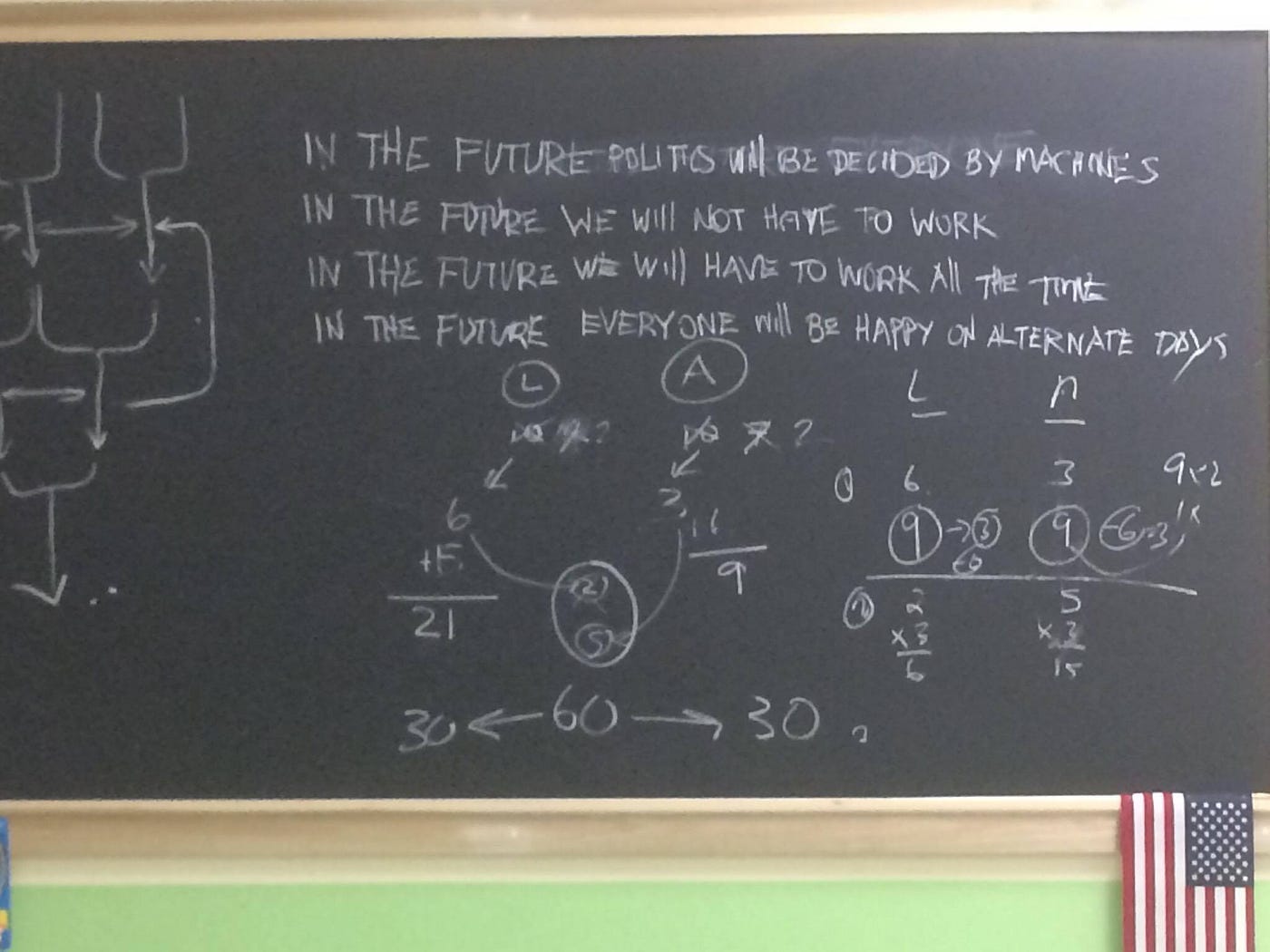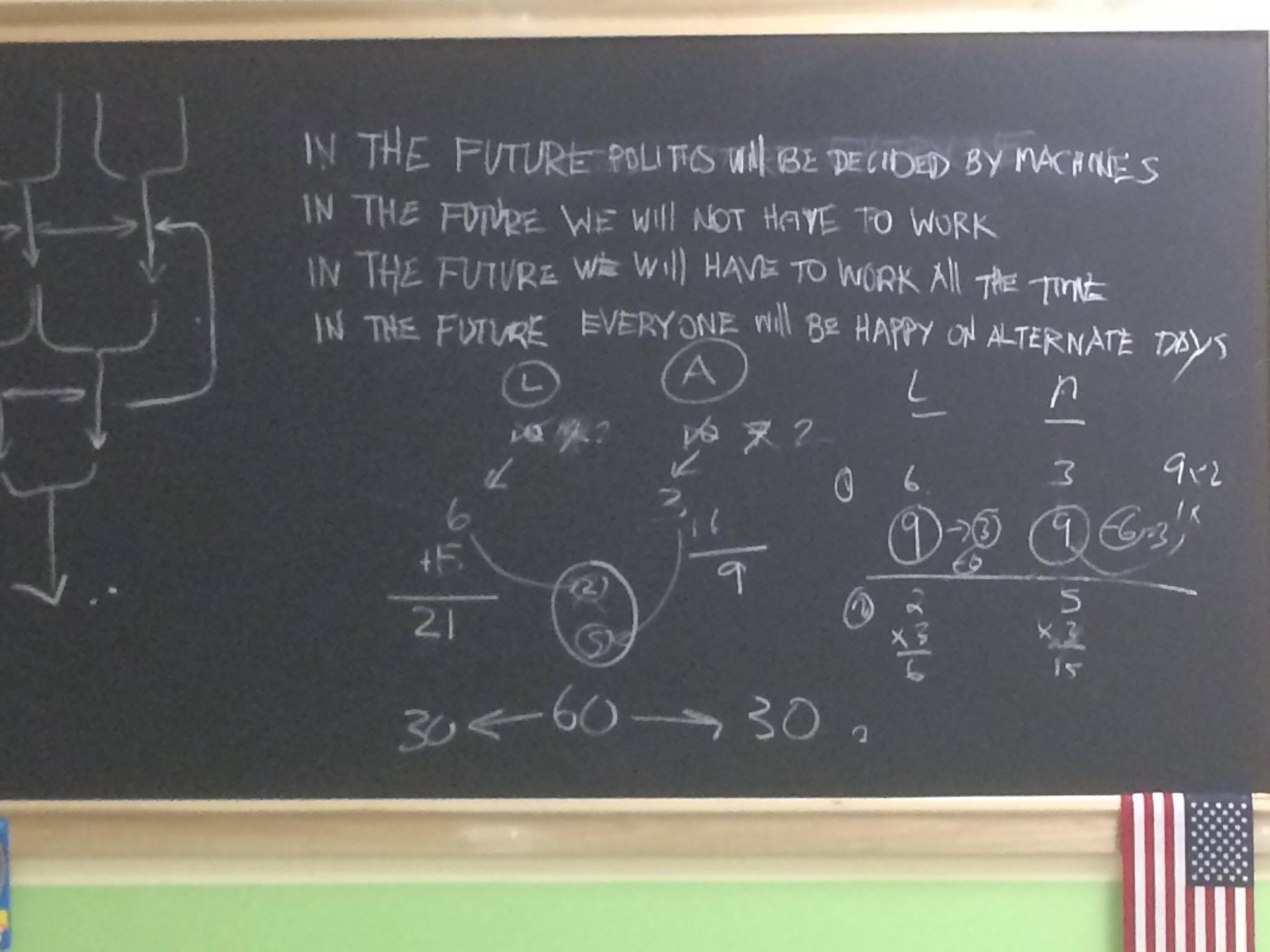
Just down the street from the Stanford campus in Menlo Park, there is a small “research” facility with a pictogram of a human head forming a question mark as its logo.
Once you enter and check in, you’re given a medical-style wristband, and told to cover your shoes with clean booties — you are about to entire a sterile area as test subjects. That confluence of factors is all you need to understand the basic premise of The Institute Presents: NEUROSOCIETY, the interactively immersive installation by David Byrne and Mala Gaonkar at Pace Galleries in Menlo Park.
Get Martin Gimenez’s stories in your inbox
Join Medium for free to get updates from this writer.
SubscribeSubscribe
Based upon actual sociological experiments from around the world (in the press materials, both a bibliography and a list of labs consulted are listed), the audience is lead through a series of environments where questions about perception are asked, refined, turned around and asked again. In two rooms, we are given various quizzes about our morality and our perceptions of politicians. The other two (far stronger) rooms, dealt with our sense of perception and how our senses (mostly our sense of sight) can play tricks upon us.
The two “quiz” rooms are meticulously designed, where one places the audience in the role of game show contestant, with flashing lights and podiums for each “contestant”. Two rooms later in the sequence we are all in a classroom, sitting down for a quiz about which politician is more likely to win an election — which we are to base strictly on a black and white photo and nothing more.
The other two rooms, which deal with how our eyes physically see things, work through various tricks of light. They work using opposite methods. One bombards our visual sense with one color to complete obscure another, while the other deals with how our brain can trick us while in a completely dark environment. After the darkness experiment, there is one final demonstration, where we are given virtual reality goggles which are hooked up to a doll at the other end of the room, and as the doll is poked and prodded, we cleverly share the doll’s sensations.
While each of these experiments had an “ain’t it cool” feeling about it, on a whole, the entire piece lacked enough of an arc to make it a thoroughly compelling experience. In early spiels there is an allusion to “The Institute’s” founder, but those threads go nowhere. This piece exists too much in the scientific world and not much elsewhere, so the end result feels like a curated series of (very beautiful) science museum exhibits, with not much tying everything together.
This is a shame, because David Byrne’s entrees into immersive theatre (the amazing techno-musical Here Lies Love, comes to mind), have been thoroughly satisfying and engaging. It was a shame to feel so removed from anything and feel just like a source for more data for continuing research. Perhaps that’s the point, wherever they decide to take this piece (which should tour the art gallery set), it would be interesting to see how each market would change the data (Though I doubt it wouldn’t change much). But if this is to have a further life, there needs to be a little more heart in a piece which is trying to get to the core of who we are as people, and not just focusing on tricks about how we see.
The Institute Presents: NEUROSOCIETY is on display through Mar 31, at PACE Art + Technology 350 El Camino Real Menlo Park CA.




















Discussion